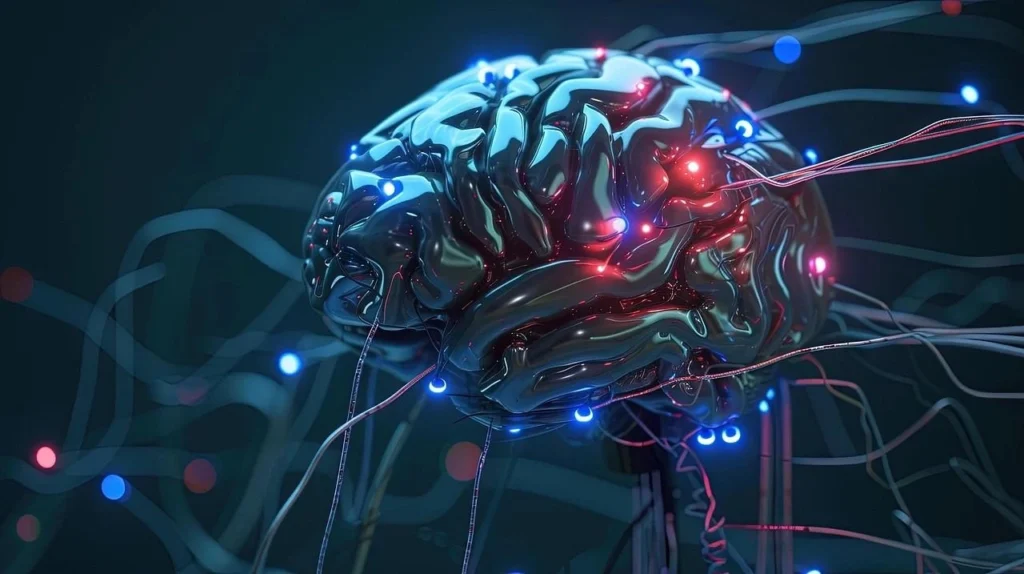
You’ve probably heard these terms tossed around in tech conversations: AI vs machine learning vs deep learning. They sound interchangeable, but they’re actually distinct technologies with very different capabilities. Here’s the thing—with about 35% of businesses now using AI and another 42% exploring it, knowing the differences has become pretty important for making smart decisions about which one you actually need.
“Some people call this artificial intelligence, but the reality is this technology will enhance us. So, instead of artificial intelligence, I think we’ll augment our intelligence.” — Ginni Rometty, former CEO of IBM
Artificial intelligence is the big umbrella term for machines that mimic human intelligence. Machine learning and deep learning? Those are more specialized subfields underneath that umbrella. And the distinction between machine learning and deep learning isn’t just semantic—deep learning demands significantly more data and computational power. That’s why organizations need to think carefully about their data volume and processing capabilities before jumping in.
The relationship between these technologies keeps evolving. Deep learning, which is essentially an evolution of machine learning, excels at finding patterns in messy, unstructured data like images, audio, video, and text. But that advanced capability comes with a price tag: you’ll need large datasets, high-end computer resources like GPUs or TPUs, and patience for longer training times.
IBM’s early tests show generative AI can deliver value up to 70% faster than traditional AI, which demonstrates why these distinctions matter for real-world applications. Deep learning is basically a specialized subset of machine learning that uses neural networks to mimic how the human brain processes information.
This guide will break down the key differences between these technologies, explaining not just what they are, but which one might actually work for your specific situation. Once you understand how they relate to each other, you’ll be better equipped to figure out which technology you actually need.
What is AI, Machine Learning, and Deep Learning?
“Just as electricity transformed almost everything 100 years ago, today I actually have a hard time thinking of an industry that I don’t think AI (Artificial Intelligence) will transform in the next several years.” — Andrew Ng, Co-founder of Google Brain, Coursera; leading AI educator and entrepreneur

Image Source: https://pixabay.com/
These three technologies build on each other—deep learning fits inside machine learning, which fits inside artificial intelligence. Understanding how they relate to each other is crucial for figuring out which one you actually need. Let’s break down each technology individually, then see how they work together.
Definition of Artificial Intelligence
Artificial intelligence refers to computer systems designed to perform tasks that typically require human intelligence. Unlike traditional software that just follows explicit instructions, AI systems can reason, discover meaning, generalize, and learn from past experience. It’s the broad science of making machines mimic human abilities like problem-solving, perception, and language understanding.
AI comes in three main flavors:
- Built for specific tasks like playing chess or recognizing faces Artificial Narrow Intelligence (ANI)
- Artificial General Intelligence (AGI): Would perform on par with human intelligence across all domains
- Artificial Super Intelligence (ASI): Would surpass human intelligence capabilities
Right now, only ANI exists in the real world. It’s what powers your voice assistant, computer vision systems, and recommendation engines.
Definition of Machine Learning
Machine learning is a subset of artificial intelligence that gives computers the ability to learn without being explicitly programmed. Instead of traditional programming where you write specific instructions, ML enables systems to improve through experience by identifying patterns in data. first coined by Arthur Samuel in 1959
Machine learning algorithms work in three main ways:
- Supervised learning: Uses labeled datasets to train algorithms for accurate outputs
- Unsupervised learning: Identifies patterns in unlabeled data
- Reinforcement learning: Learns through interaction with environments and feedback
Here’s something important to note: ML models typically require more structured data and often depend on humans to determine which features distinguish different categories. That’s a key difference from deep learning.
Definition of Deep Learning
Deep learning is a more specialized subset within machine learning. Introduced to the machine learning community by Rina Dechter in 1986, it uses multilayered neural networks to simulate how the human brain makes complex decisions.
The “deep” part refers to the number of layers in the neural network—typically three or more, but often hundreds or thousands. Each layer of the network learns more detailed patterns from the data without human intervention.
What makes deep learning particularly powerful is its ability to process unstructured data like images, text, and audio without manual feature extraction. That’s something traditional machine learning struggles with.
How They Interact and Overlap
The relationship creates a clear hierarchy: deep learning is a subset of machine learning, which itself is a subset of artificial intelligence.
Machine learning provides AI with the methodologies and algorithms for learning from data, while deep learning offers sophisticated neural network structures for handling complex pattern recognition tasks. Each technology builds on the capabilities of the broader category that contains it.
The primary differences between deep learning and machine learning come down to data requirements and human intervention. Deep learning automates feature extraction but requires larger datasets and more computational resources, whereas traditional machine learning often needs human-guided feature engineering but can work with smaller datasets.
This hierarchy continues to evolve as researchers develop new architectures and approaches to solve increasingly complex problems across various industries.
Technical Comparison: AI vs ML vs DL
The technical differences between these technologies reveal critical performance gaps that determine which one actually works for specific applications. Beyond the theoretical definitions, they vary dramatically in their practical requirements and capabilities. These differentiating factors directly impact implementation decisions.
Data Volume: Small vs Big Data
Here’s where the requirements diverge significantly. Traditional machine learning algorithms can function effectively with relatively modest datasets, typically requiring about. Deep learning models demand substantially larger datasets, starting at thousands of data points per feature. This disparity stems from their architectural differences. 50-100 data points per feature
Machine learning models often work with structured “small data” measured in gigabytes, making them suitable for specific business questions with limited data availability. Deep learning thrives on “big data” measured in terabytes or larger, particularly unstructured information that comprises approximately 90% of the world’s data. This explains why deep learning continues gaining accuracy with increasing data volumes, whereas machine learning models typically plateau after reaching a certain threshold.
In deep learning, the more data you have, the smarter the machine gets.” — Unknown (widely cited in AI communities
Hardware Requirements: CPU vs GPU
The hardware you need depends on which technology you use. Machine learning algorithms can often run on standard computers with central processing units (CPUs), whereas deep learning typically demands graphics processing units (GPUs) with their superior parallel processing capabilities.
The performance gap becomes evident in practical benchmarks—the same neural network trained across 100 epochs required approximately 17 minutes and 55 seconds on a CPU versus just 5 minutes and 43 seconds on a GPU. The difference exists because:
- CPUs process data sequentially with fewer cores (typically 1-6)
- GPUs utilize thousands of cores for parallel computing
- GPUs excel at tensor math and matrix multiplication essential for neural networks
Nevertheless, high-end GPUs like, creating serious cost-benefit considerations for implementation. NVIDIA’s H100 can cost upwards of $25,000 per card
Output Types: Classification vs Generation
The output capabilities show notable variations across these technologies. Traditional machine learning focuses primarily on classification, regression, and prediction tasks using algorithms like decision trees and support vector machines. Deep learning systems can produce both classificatory and generative outputs.
Deep learning’s generative capabilities—particularly through architectures like Generative Adversarial Networks (GANs), Variational Autoencoders (VAEs), and Transformers—enable the creation of entirely new content beyond simple classification. This distinction has fueled innovations like image synthesis, text generation, and creative applications that traditional machine learning cannot achieve alone.
Execution Time and Scalability
When comparing performance metrics, execution time and scalability emerge as critical differentiators. Machine learning algorithms typically train faster with shorter execution periods spanning seconds to hours. Deep learning models require significantly longer training periods—from hours to weeks—due to their complex mathematical computations.
Despite longer training times, deep learning systems offer superior scalability. As more data and computational resources become available, deep learning performance continues improving, often surpassing human-level capabilities in specific tasks. Additionally, the scalability differs fundamentally—machine learning divides problems into pieces solved individually, while deep learning handles the entire problem from start to finish, enabling more complete solutions for complex challenges.
Neural Networks and Deep Learning Architectures
“Deep learning has become the magic wand of modern AI.” — Unknown (popularized in AI discourse)
Neural networks are the building blocks that make deep learning work, and different network designs solve different types of problems. Understanding these networks helps you figure out which approach actually makes sense for your specific situation.
Feedforward vs Recurrent Neural Networks
—from input through hidden layers to output—without cycles or loops. They move data step by step from input to output in one direction. This straightforward design works great for static data where previous inputs don’t affect future outputs, so they excel at pattern recognition tasks but struggle with sequential data. Feedforward neural networks (FNNs) process information in one direction only
Recurrent neural networks (RNNs) work differently—they create feedback loops that give them “memory” of previous inputs. , which makes them perfect for processing sequential data like text, audio, or time series. This memory capability is what makes RNNs particularly useful for tasks where context matters, like understanding language or predicting stock prices based on historical trends. RNNs can maintain internal states across time steps
Convolutional Neural Networks (CNN)
CNNs changed the game for image processing by applying filters (kernels) that detect features in grid-like data. Their architecture typically includes convolutional layers that extract features, pooling layers that reduce dimensions, and fully connected layers for classification. CNNs are exceptionally good at visual pattern recognition, enabling systems to identify objects, faces, and complex visual features with impressive accuracy.
Generative Adversarial Networks (GAN)
GANs work by having two networks compete—one tries to create fake content, the other tries to spot it. Both get better over time. The generator creates fake data while the discriminator tries to spot the fakes, and both networks get better through this continuous competition. This setup enables systems to generate realistic images, enhance resolution, and create synthetic training data for other models.
Transformers in NLP
Transformers, introduced in 2017, completely changed how we approach natural language processing through self-attention mechanisms. They process all words simultaneously rather than one by one, which solves the bottleneck problems that RNNs had. They also capture long-range dependencies between words regardless of distance, making them highly effective for translation, summarization, and text generation. Their parallel processing architecture allows for much faster training than recurrent models while delivering better performance.
Each of these architectures serves specific purposes, and choosing the right one depends on your data type and what you’re trying to accomplish.
Use Cases Across Industries
“What’s behind the driverless cars? Artificial Intelligence, or more specifically Deep Learning.” — Dave Waters, AI educator and supply chain thought leader
Real-world applications show where each of these technologies actually works best. Instead of just talking about theoretical differences, let’s look at how companies are using AI, machine learning, and deep learning to solve actual problems.
AI in Autonomous Vehicles and Fraud Detection
Self-driving cars are probably the most visible example of AI in action. Tesla uses deep learning for its Autopilot and Full Self-Driving features. The car’s computer vision systems constantly analyze what’s around them—spotting obstacles, reading road signs, and planning routes. It’s essentially processing massive amounts of sensor and camera data to make split-second decisions.
Financial fraud detection is another area where AI shines. that can spot potentially fraudulent transactions as they happen. AI systems also help with cybersecurity, using facial recognition and malware detection algorithms to identify phishing attacks and other threats. JPMorgan Chase implements real-time analysis
ML in Predictive Maintenance and Credit Scoring
Machine learning excels at predictive maintenance—basically predicting when things will break before they actually do. Finland’s VR group installed sensors across 1,500 trains and managed to. Siemens uses similar approaches to reduce unplanned downtime by creating data-driven maintenance strategies. cut their maintenance work by one-third
Credit scoring is another sweet spot for machine learning. About 45 million Americans are considered “credit invisible” or underserved by traditional credit scoring. Machine learning models can look at alternative data like rent payments and mobile usage patterns to give a more complete picture of someone’s financial reliability.
DL in Image Captioning and Speech Recognition
Deep learning really shows its strength with complex pattern recognition tasks. Image captioning—where systems generate text descriptions of photos—helps visually impaired people, powers image search, and even assists with medical diagnosis. This requires combining computer vision (using CNNs) with natural language processing (using RNNs).
Each technology has found its niche based on what it does best, rather than trying to be a one-size-fits-all solution.
How to Decide What You Need
Choosing between AI, machine learning, and deep learning isn’t just about picking the most advanced option—it’s about matching the right technology to your actual needs and resources. The decision process looks different depending on whether you’re working on a personal project or implementing something at the enterprise level. Since approximately now use AI with another 42% exploring these technologies, getting this decision right has become pretty important. 35% of businesses globally
Personal Use
For personal projects, your choice usually comes down to a few key factors:
Problem Complexity: Traditional machine learning handles straightforward classification or prediction tasks really well, while deep learning shines when you need complex pattern recognition. If you’re trying to predict housing prices based on square footage and location, machine learning will do the job. If you want to identify objects in photos, you’ll probably need deep learning.
Data Availability: Machine learning works with smaller datasets, which makes it accessible for personal projects where you might not have tons of data to work with. Deep learning needs a lot of data to work well.
Computing Resources: Your laptop can probably handle just fine, but deep learning often demands specialized hardware like GPUs. That’s a real consideration when you’re working with personal budgets. machine learning algorithms
Time Constraints: Machine learning models train faster, so you can experiment and iterate more quickly compared to deep learning systems that might take hours or days to train.
Business Use
Organizations face additional considerations that personal users don’t have to worry about.
First, you need to look at your data situation. Machine learning performs well with the structured, tabular data that most businesses already have, while deep learning excels with unstructured content like images, audio, or text.
Transparency requirements matter too. Machine learning offers more interpretability, which is crucial for regulated industries where you need to explain your decisions. Financial services, healthcare, and retail companies often prefer machine learning for fraud detection, risk assessment, and inventory management because they can actually understand what the model is doing.
But when accuracy trumps explainability—think image recognition, speech processing, or autonomous systems—deep learning usually wins despite being more of a “black box”.
Finally, in AI vs machine learning vs deep learning, there’s the practical side of implementation. Machine learning requires less specialized expertise and infrastructure, making it more accessible for companies without extensive AI resources. IBM’s early tests show generative AI can bring than traditional AI, which demonstrates why understanding these distinctions actually matters for business applications. time to value up to 70% faster
The key is being honest about what you’re trying to solve and what resources you have available to solve it.










